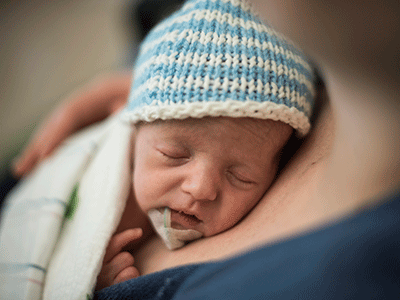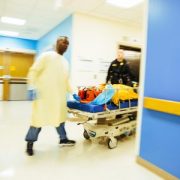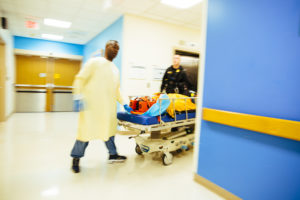From the mouths of babes: Lessons in humility

A poem written by Alexandra M. Sims, M.D., FAAP, was published Jan. 7, 2020, in JAMA, as part of its series of works by artists and physicians that explore the meaning of healing and illness.
Each encounter is like a single shard in a mosaic that, taken as a whole, presents a picture of amazing optimism despite myriad challenges.
Alexandra M. Sims, M.D., FAAP, a General Academics Pediatric Fellow at Children’s National Hospital, captured the anonymized vignettes in her journal, using writing as a way to help process both the unbounded joy and sobering trauma experienced by her young patients.
Dr. Sims distilled the snippets into a 27-line poem published Jan. 7, 2020, in JAMA, as part of “Poetry and Medicine,” poems penned by artists and physicians to explore the meaning of healing and illness.
One of the vignettes collapses eye-opening comments she heard during a number of clinical encounters, including a childhood immunization session for a 4-year-old: Doesn’t flinch with the vaccines, but tells me not to call them ‘shots’ / His classmate was shot last year / And she died
“When I’m talking about a ‘shot,’ the first thing that comes to my mind – because of what I do for a living and how my life has unfolded – is a vaccination,” Dr. Sims explains. “That caught me off guard. Even though I have been doing this job for a while, I can always learn from patients and families. It really made me shift the language I use, avoiding words that I might think are innocuous that can be translated in ways that can be scary for a child.”
And the poem’s title, “Keep That Same Energy,” was inspired by a young man who, like many patients, calls her Dr. Seuss, and ended his visit by doing 10 pushups: Keep that same energy, sweet Black boy, I silently pray / That agency, that confidence / When the world tries to tell you who you are
During each clinical encounter, Dr. Sims says she tries to instill a sense of pride and competence in the hopes it helps her patients continue to persevere in the face of adversity.
“The patients we see here experience trauma in a lot of big and small ways,” she says. “I’m blown away by their positivity and resilience and ability to deal with a lot of things life is throwing at them. My worry is when – and if – the resiliency will wear down and what things we should be doing as providers to build up that self-efficacy and resiliency so it will last a lifetime.”
LISTEN: Dr. Sims reads “Keep That Same Energy”










